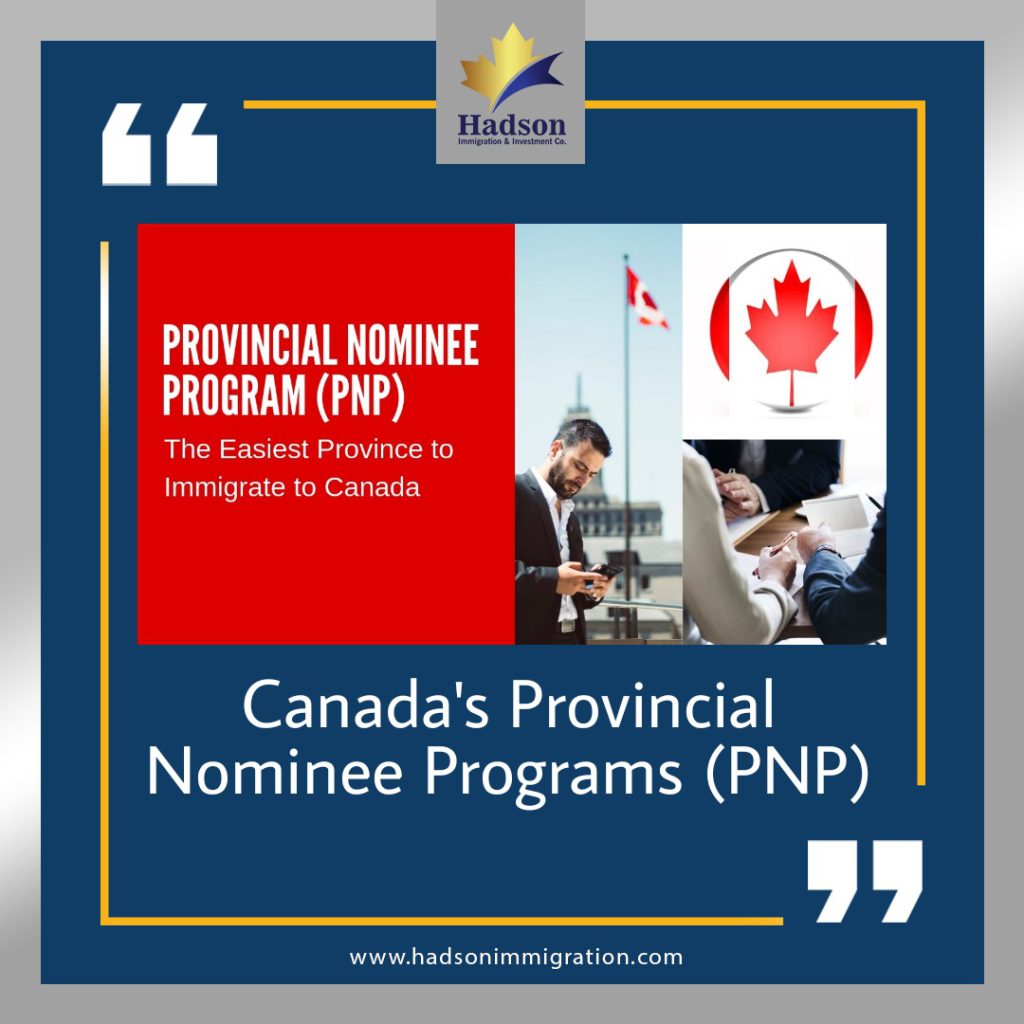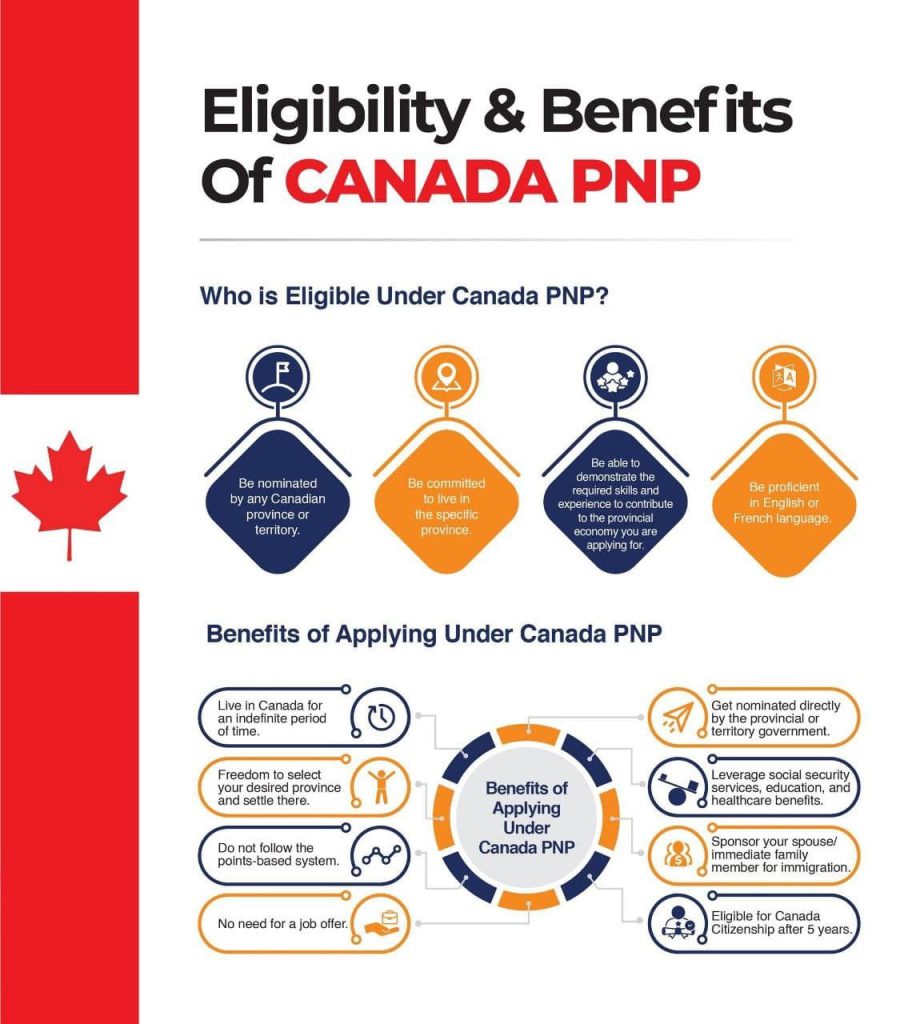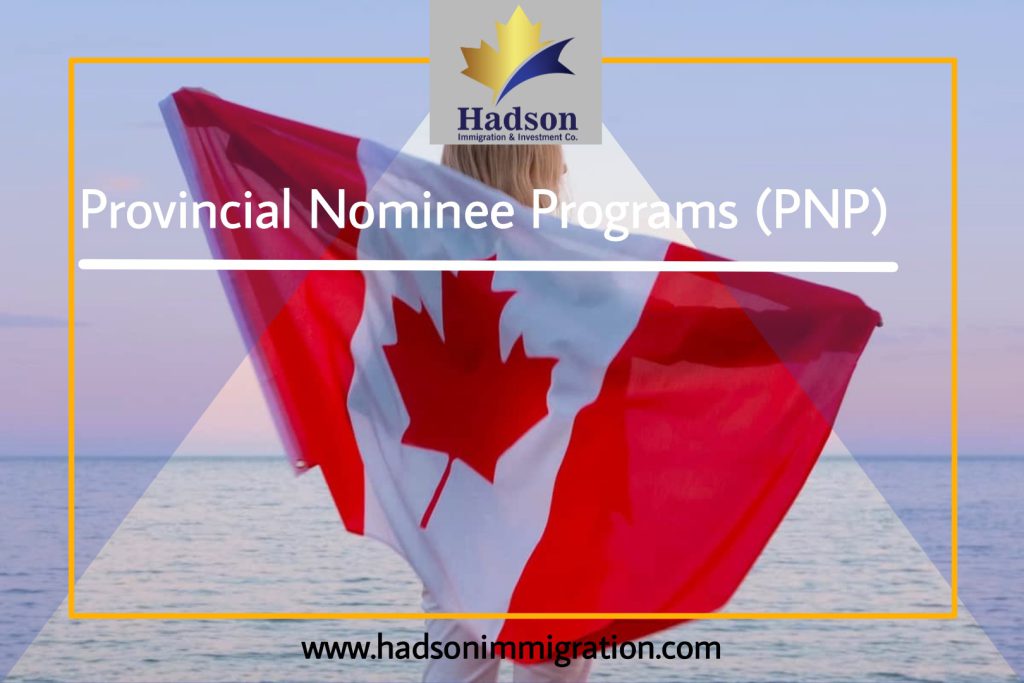Provincial Nominee Program (PNP)
Launched in 1998, the Provincial Nominee Program (PNP) is the second leading way to immigrate to Canada as a skilled worker after Express Entry.
Nearly every province and territory operates the PNP to welcome skilled workers from all over the world to help strengthen their economies. Scroll down to learn more on the PNP.
Canada’s provincial nominee programs (PNPs)
offer a pathway to Canadian permanent residence for individuals who are interested in immigrating to a specific Canadian province or territory.
Each Canadian province and territory operates its own PNP designed to meet its specific economic and demographic needs.
Every year, the Canadian federal government increases the number of invitations for PNP candidates. These programs are the fastest growing route to economic immigration in Canada.
Each province, with the exception of Quebec, operates several PNP streams.
These streams are designed by the provinces to help meet their unique immigration goals, so the eligibility criteria and application procedures vary. However, PNPs are a popular option because they can be the fastest pathway to Canadian permanent residence.
Canada’s provinces cannot approve permanent resident status on their own. This is why the provincial programs are considered “Nominee” programs.

A successful applicant to a PNP will be nominated by the province to submit an application for permanent residence to the federal government. This means that securing a provincial nomination is always step one in a two-part process.
First, an interested immigrant is approved at the provincial level and then they must apply to the federal level.
Which PNP Streams Am I Eligible For?
With more than 80 provincial immigration streams, discovering the Canadian immigration pathway that best suits you may be challenging.
The Canada PNP Finder is designed to help you discover the right immigration pathway to Canadian permanent residence.

Provinces and Territories
- Alberta
- British Columbia
- Manitoba
- New Brunswick
- Newfoundland and Labrador
- Northwest Territories
- Nova Scotia
- Ontario
- Prince Edward Island
- Quebec
- Saskatchewan
- Yukon
Express Entry Provincial Nominee Programs
In 2015, Canada introduced Express Entry as a system to manage applications for permanent residence through same major economic immigration programs.
Since then, many Canadian provinces and territories have developed ‘enhanced’ PNP streams that are aligned with Express Entry. This means that some PNPs require that an applicant have an Express Entry profile in order to meet the PNP eligibility requirements.
If an applicant is nominated through a PNP which is aligned with Express Entry, the applicant can then claim 600 additional Comprehensive Ranking System (CRS) points, virtually guaranteeing they will receive an invitation to apply (ITA) for permanent residence in the next Express Entry draw.
Alternately, if an applicant receives a nomination through a PNP which is not aligned with Express Entry, then they must submit a paper-based federal application for permanent residence as a provincial nominee.
Am I eligible for a Canadian PNP?
The eligibility factors for PNPs vary from province to province.
Therefore, some PNPs prioritize immigrants who have experience in occupations which are in-demand in that province. Other PNPs prefer immigrants who have a connection to the province, like a relative, as this increases the chance that they will remain in the province.
As with most economic immigration programs, young applicants who possess strong language skills, high levels of education, and skilled work experience are better suited to succeed.

How to apply for a Provincial Nominee Program?
Step-by-Step guide to applying to a Canadian PNP:
- Find the PNP that is right for you: Consult the list of provinces and territories at the top of this page to determine where you would like to immigrate.
Make sure to check the requirements for each PNP to determine your eligibility.
2. Apply to your chosen PNP: Submit an application directly to your chosen province or territory.
3. Obtain a Provincial Nomination certificate: If your application is successful, the province or territory will nominate you to apply for Canadian permanent residence.
4. Submit your application for permanent residence: Apply to the Canadian federal government for permanent residence. If your chosen PNP is aligned with Express Entry, you can do this online.
If not, you must submit a paper-based application.
Provincial Nominee Program Updates Tracker
Each of Canada’s provinces and territories operates their own set of immigration programs, called Provincial Nominee Programs (PNPs). As each province has different demographic and labour needs, no two PNP’s are exactly the same.
Programs may open at different times of the year and for different durations. As PNP’s are constantly changing, check up with this page regularly for the latest updates for all of Canada’s PNPs.
Each PNP has requirements that are specific to the needs of the province or territory.
If you have a connection to the province or territory through school or work experience, you will have a greater chance of receiving a provincial nomination.
Your skills and work experience will also play a role, as the labour market of every province and territory in Canada are different.
The requirements are different for each PNP in Canada.
Provinces and territories are often looking for applicants with work experience that meets the needs of their specific labor market.
They also take into consideration language proficiency, education, and skill set. To qualify, you must demonstrate that you will be able to contribute to the local economy and have a genuine intention to settle in that province or territory.
Applying for Canadian permanent residence through a PNP program is a two-step process.
First, you must apply to the province. Once that has been approved, you must then submit your application to the federal government. Only the federal government can grant you Canadian PR.
Processing times vary from one province to the next, but it typically takes a few months for your application to be processed.
🔗 This tool can help you find out the processing time at the federal level.
Typically, the processing time to make a decision is approximately 4 months from the date of assignment (this estimated timeframe is based on 80 per cent of cases and is subject to change due to program capacity).
Yes.
Research by Immigration, Refugees and Citizenship Canada (IRCC), Statistics Canada, Canada’s provinces and territories, and academics show that immigrants who arrive through the Provincial Nominee Program (PNP) have strong labor market outcomes.
They are often able to integrate quickly into the Canadian job market.
The research shows that PNP immigrants tend to earn high wages, have high rates of labor force participation and employment, and low rates of unemployment.
Reasons for the success of PNP immigrants include:
- PNP immigrants are nominated based on meeting the local labour market needs of Canada’s provinces and territories.
- They have high levels of human capital including strong language skills, education, work experience, and Canadian connections.
- PNP selection criteria often screens for Canadian work experience, Canadian education, and pre-arranged employment in Canada.
The HadSonImmigration PNP Finder is designed to help, and in addition, you can complete a free assessment in order to identify which PNP streams you may be eligible for.
Canada’s Constitution allows Canadian citizens and permanent residents to move freely within the country.
You can move to another province if you obtained permanent residence through the PNP, however you are strongly encouraged to be honest about your residency intentions when submitting your PNP application. Misrepresenting your intentions is a serious offense and can lead to consequences for you.
It is best to pursue a PNP stream in a province or territory that you believe meets your professional and personal needs.
Some PNP streams will provide a candidate with a work permit.
Once the candidate has met certain criteria, the province or territory may issue a nomination certificate to the candidate so they can apply for permanent residence.
In such cases, you need to reside in that province or territory while you hold a work permit to meet the conditions to get a provincial nomination.
No. Various PNP streams do not require a job offer or Canadian work or study experience in order for candidates to be eligible to successfully receive a nomination.
Yes, close family members can move to Canada with you and also obtain permanent residence.
Close family members include:
- your spouse or common-law partner
- dependent children
- dependent children of your spouse or common-law partner
- dependent children of dependent children
Dependent children are:
- under 22 years old and not a spouse or common law partner
- 22 years of age or older, depended significantly on financial support from their parents before the age of 22 and cannot support themselves financially due to a physical or mental condition
Many PNPs require that applicants have an active profile in the Express Entry pool.
However, there are exceptions to this where some provinces issue nominations to applicants who do not have Express Entry eligibility.
These programs vary in their eligibility requirements, so it is best to consult with a representative to discuss your eligibility.
All PNPs resulting in a nomination require that the applicant then submit a permanent resident application to the federal government.
If the PNP is not aligned with Express Entry, the federal permanent residency application must be submitted in the paper-based format, rather than electronically.
Under its Immigration Levels Plan, Canada seeks to welcome over 80,000 immigrants through the PNP each year.








Pingback: Ontario Entrepreneur stream - Hadson Immigration - Ontario Entrepreneur